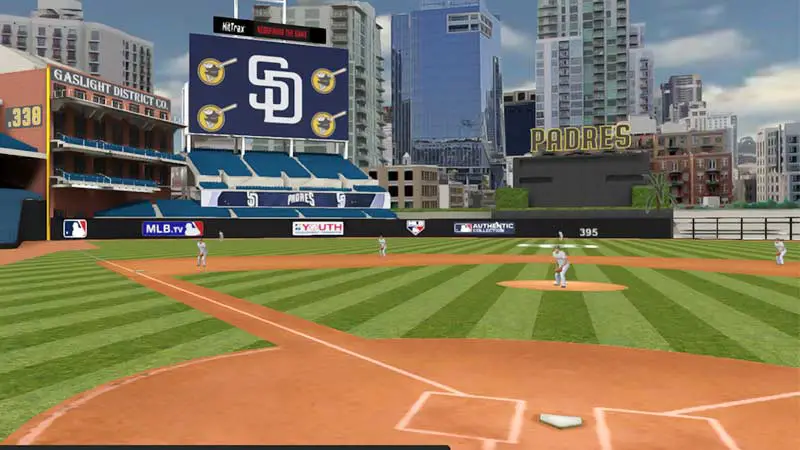In the fast-paced world of Major League Baseball, split-second decisions can make or break a game. To ensure fairness and accuracy, MLB introduced expanded instant replay rules in 2014, allowing managers to challenge up to two calls per game. This move aimed to minimize human error and enhance the integrity of the sport.
The expanded replay system grants managers one challenge over the first six innings and two from the seventh inning until the end of the game.
Calls under review are scrutinized by a dedicated crew at MLB headquarters in New York City, who deliver the final verdict.
This system has brought a new layer of strategy and precision to America’s pastime, making every pitch and play even more critical.
History of Challenge Rules in MLB
The history of challenge rules in Major League Baseball (MLB) is relatively recent, primarily emerging in response to advancements in technology and a desire for more accurate officiating.
Here’s a brief overview:
Origins and Early Implementations
In 2008, Major League Baseball first introduced instant replay to review contested home run calls. The catalyst was a series of controversial home run decisions, prompting MLB to enhance the accuracy of their officiating.
Initially, this limited use was minimal, with replay only being applied to boundary calls involving home runs.
The first call overturned by instant replay occurred on September 19, 2008, at Tropicana Field. Carlos Peña of the Tampa Bay Rays hit a ball that was initially ruled as spectator interference.
After review, umpires determined it was a home run, extending the Rays’ lead. This instance highlighted the technology’s potential to correct critical errors during games.
Key Milestones and Changes
Here are some key milestones and changes in the history of challenge rules in MLB:
2008: Introduction of Instant Replay
MLB introduces instant replay on a limited basis, allowing umpires to review disputed home run calls. This marks the first step towards utilizing technology for officiating purposes.
2014: Expanded Replay
MLB expands the use of instant replay to cover more types of calls, such as fair/foul balls, catch/trap calls, and tag plays. Managers are given the ability to issue challenges, with a limited number of challenges per game.
2014 (Continued): Review Process Established
MLB establishes a centralized replay review process, with a crew in the MLB Replay Operations Center in New York responsible for reviewing disputed calls and communicating decisions to on-field umpires.
2014 (Continued): Challenge Limitations
Managers are initially allowed one challenge per game, with an additional challenge granted if the first one is successful.
Challenges are not permitted after the start of the seventh inning, except for home run calls, which can be reviewed at any time.
Adjustments and Refinements
Over the years, MLB makes adjustments and refinements to the replay rules, such as clarifying what types of plays are reviewable and modifying the process for initiating reviews.
Technology Advancements
Advances in technology, such as high-definition cameras and multiple camera angles, enhance the effectiveness of replay reviews and contribute to more accurate officiating.
Impact on Strategy and Pace of Play
The introduction of challenge rules and expanded replay options adds a strategic element to the game, as managers must decide when to issue challenges.
However, it also leads to debates about the pace of play and the potential for delays caused by replay reviews.
Fan Experience
Replay reviews become an integral part of the fan experience, with spectators able to see replays on stadium scoreboards and televisions at home. The uncertainty and anticipation during replay reviews add to the drama of the game.
Overview of Current MLB Challenge Rules
Here’s an overview of the current MLB challenge rules:
How the Instant Replay System Works
The Instant Replay System in Major League Baseball (MLB) is a centralized process designed to review certain types of calls and ensure accuracy in officiating.
Here’s how the system typically works:
Challenge Initiation
The process usually begins when a manager decides to challenge a call made by the on-field umpires. Managers are typically allowed one challenge per game, with the opportunity to earn an additional challenge if their first one is successful. Challenges must be issued promptly after the play in question occurs.
Review Request
After a challenge is initiated, the on-field umpires communicate with the Replay Operations Center in New York to request a review of the call.
The umpires provide details about the specific play being challenged and the reason for the challenge.
Review Process
At the MLB Replay Operations Center, a crew of umpires reviews the disputed play using available video footage from multiple camera angles.
The crew examines the replays closely to determine the accuracy of the original call. They may use various technological tools and enhancements to aid in their decision-making process.
Communication of Decision
Once the review is complete and a decision has been reached, the crew in the Replay Operations Center communicates the outcome to the on-field umpires.
The decision is relayed to the umpires via a communication system, typically involving earpieces or headsets.
Announcement of Decision
The on-field umpires announce the outcome of the review to the teams and spectators in the ballpark. They may use hand signals or gestures to indicate whether the call stands or is overturned.
If the call is overturned, the appropriate adjustments are made, such as awarding a base to a runner or reversing a ruling on a catch.
Consequences of Review
Depending on the outcome of the review, the game may resume with the revised call, or play may be adjusted accordingly.
If the challenging manager’s challenge is successful, they retain the right to challenge another call later in the game.
However, if the challenge is unsuccessful, they lose their ability to challenge any further calls during the game.
Umpire-Initiated Reviews
In certain situations, umpires may initiate a review without a manager’s challenge. This typically occurs for plays that may have significant impact on the game’s outcome, such as potential home runs or boundary calls. Umpires have the authority to review these plays on their own accord to ensure accuracy.
Fan Experience
MLB often broadcasts the replay review process on stadium scoreboards and television broadcasts, allowing fans to follow along with the review and providing insight into the decision-making process. This helps maintain transparency and engagement with fans during the review process.
Types of Plays Subject to Review
Instant replay can review various types of plays to maintain the game’s integrity.
These include:
- Boundary Calls: Fair and foul calls on balls hit down the lines.
- Catch/Trap Plays: Determining if a ball hit to the outfield or infield is caught or trapped.
- Interference Reviews: Reviewing fan interference and whether it impacted a player’s ability to make a play.
- Tag/Umpire Placement: Evaluating whether runner tags or base touches were correctly called.
- Force/Timing Plays: Deciding if a runner was out or safe on force plays and timing incidents.
Recent Amendments and Their Impact
Here are some recent amendments and their potential impact:
Adjustments to the Pitch Clock
Major League Baseball has standardized the pitch clock across all levels of full-season baseball. The new rules specify an 18-second pitch clock with runners on base, a 15-second pitch clock with no runners on base, and a 30-second pitch clock between batters.
Previously, the pitch clock varied, with 19 seconds in Triple-A, 18 seconds in Double-A and below, and 20 seconds in MLB.
These adjustments aim to improve the game’s pace, ensuring a more consistent and streamlined experience for fans and players alike.
Furthermore, inning breaks and pitching changes now feature a two-minute and 15-second pitch clock, maintaining the game’s continuity.
Modifications on Pitching Substitutions and Mound Visits
Changes have also been made regarding pitching substitutions and mound visits. Pitchers are now limited to two disengagements per plate appearance, which include pick-off attempts, stepping off the rubber, or feinting a pick-off throw.
If a pitcher attempts a third disengagement and fails to retire the baserunner, it will count as a balk, which adds strategic depth to the game.
This rule encourages pitchers to be more deliberate with their actions, aiming to reduce game delays and keep the action moving.
Controversial Rules and Their Reception
In Major League Baseball (MLB), several rules and changes have sparked controversy and elicited varied receptions from players, managers, fans, and pundits.
Here are some examples:
The Runner’s Lane Rule
The MLB Competition Committee introduced a change in the runner’s lane rule for the 2024 season. The new regulation widens the runner’s lane to give batters more room, extending it between 18 and 24 inches.
This amendment was designed to reduce collisions and interference incidents as runners advance to first base. However, the rule has sparked debate.
Some argue that it unfairly favors batters, providing them with a broader path. Conversely, others support the change, highlighting safety and fewer disputes over interference.
The Shift Ban and Its Consequences
The restrictive shift ban, implemented to balance offensive and defensive plays, has been another controversial rule. The shift ban prohibits infielders from positioning themselves in certain areas to create a defensive edge.
Critics claim the ban limits strategic variety and reduces depth in the game. Proponents argue that it promotes fair play and enhances viewer engagement by increasing offensive action.
The impact of the shift ban continues to be a subject of intense discussion among players, coaches, and fans alike, reflecting the divide in opinions on its effectiveness and fairness.
The Future of MLB Challenge Rules
The future of challenge rules in Major League Baseball (MLB) is likely to involve a continued evolution aimed at balancing the pursuit of accurate officiating with considerations for game flow, pace of play, and fan engagement.
Here are some potential directions for the future of MLB challenge rules:
Potential Rule Changes
MLB continually explores potential rule changes to enhance fairness and efficiency. The challenge system, which allows teams to contest umpire decisions via instant replay, has already seen significant adjustments.
Recent discussions suggest further enhancements, targeting overall game flow and decision accuracy.
Future potential alterations may include expanding challenge availability, reviewing additional play types, and refining the challenge process’s timing and criteria to minimize game interruptions.
Technological Advances and Their Implications
Advancements in technology have drastically influenced MLB’s challenge rules. HawkEye, a sophisticated pitch-tracking system, now assists in call validations, offering precise ball and strike judgments.
Emerging tech like AI and enhanced video analytics could further revolutionize the challenge system, ensuring higher accuracy and consistency.
These advancements not only support umpire decisions but also maintain the integrity of the game, blending technological precision with human oversight.
Frequently Asked Questions
What are the new amendments to MLB rules for 2024?
The 2024 amendments include a standardized pitch clock, time limits for pitchers based on game situations, and restrictions on pitching substitutions and mound visits to enhance game pace and strategy.
What is the widened runner’s lane rule?
The widened runner’s lane rule aims to reduce collisions and interference incidents, enhancing player safety. However, it has sparked debate among players and fans regarding its impact on the game.
What does the shift ban entail?
The shift ban prohibits infielders from certain defensive positioning, aiming to increase offensive action. This rule has stirred controversy about its effect on strategic variety and viewer engagement.
Are there potential future changes to the MLB challenge system?
MLB is exploring rule changes to enhance fairness and efficiency in the challenge system. This includes expanding challenge availability, reviewing additional play types, and refining the challenge process’s timing and criteria.
How is technology influencing the future of MLB challenge rules?
Technological advancements like HawkEye pitch-tracking and potential future AI integration are shaping the future of MLB challenge rules by improving decision accuracy and maintaining the game’s integrity.
Conclusion
Major League Baseball’s challenge rules have undergone significant transformations to enhance the game’s fairness and efficiency.
The recent amendments and controversial rules introduced for the 2024 season reflect MLB’s commitment to balancing tradition with innovation.
As technological advancements like HawkEye pitch-tracking and potential AI integration continue to evolve, the future of MLB challenge rules promises greater accuracy and integrity.
By blending technology with human oversight, MLB aims to maintain the sport’s essence while ensuring precise and fair officiating.
The ongoing exploration of potential rule changes signifies a proactive approach to improving the game for players and fans alike.








Pat Bloom